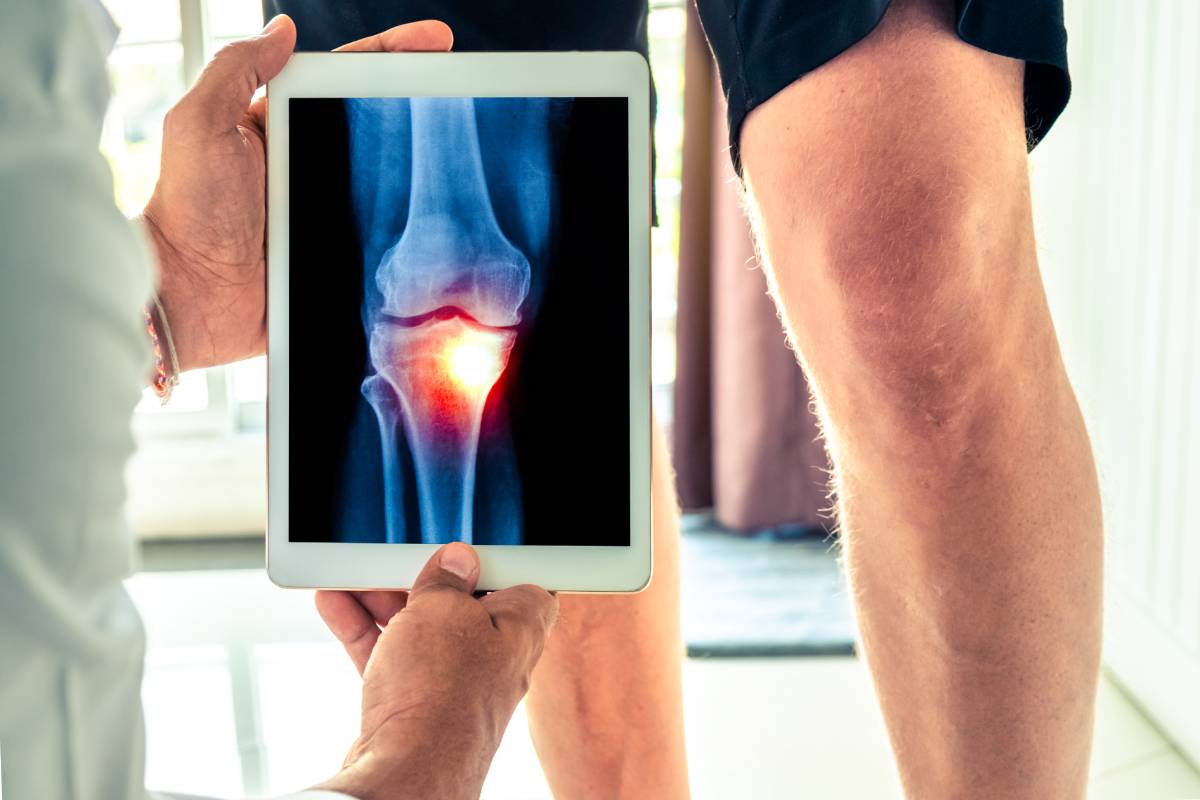Adductor Canal Block for Total Knee Arthroplasty

Total knee arthroplasty (TKA) is an operation used for treating end-stage knee arthritis [1]. Unfortunately, it is a painful surgery, with a significant proportion of TKA patients experiencing severe pain [2]. Consequently, there is a great need for effective postoperative analgesia that minimizes complications and maximizes range of motion [3]. Adductor canal block (ACB) offers a relatively new means of anesthesia administration, with the possibility of reducing opioid consumption and expediting recovery [3].
The adductor canal is a cavity bordered by the medial femoral, sartorius, and adductor muscles [1]. Consequently, ACB does not run as great a risk as femoral nerve blocks (FNB) of compromising motor function by causing saphenous nerve blockage [1]. As a result, researchers hypothesized that ACB could diminish at least some of the severe pain and immobility associated with TKA [1].
To test this hypothesis, several studies have sought to compare ACB and FNB following total knee arthroplasty. Li et al. conducted one such experiment in 2015, when ACB was a relatively novel technique [1]. The researchers analyzed 66 records, which contained 434 patient profiles and the descriptions of 504 knees [1]. They aimed to compare ACB and FNB [1]. They found that the former method led to decreased at rest visual analog scale (VAS) pain scores at eight and twenty-four hours after surgery, as well as improved mobilization and quadriceps strength [1]. Despite a lack of substantial differences between VAS scores at rest and with activity two days after the operation, Li et al. still recommended the use of ACB, citing the block’s ability to promote a faster recovery and modulate pain better than FNB [1]. In a 2014 study, Kim et al. also identified ACB’s pronounced ability to decrease pain, compared with FNB, in the first eight hours following surgery [4].
Following years of similarly promising results, ACB has garnered a reputation for being the superior post-TKA analgesic option [3]. While ACB has proven preferable to FNB in numerous cases, total knee arthroplasty patients still suffer a significant amount of pain [2]. A study analyzing the difference in ACB-related pain scores at rest versus during active flexion found that 78% of its patient cohort still experienced moderate movement-related pain [2]. As a result, researchers are experimenting with different anesthetic agents in the hopes of further reducing pain.
Ropivacaine is frequently the anesthetic agent of choice following TKA [3]. Compared with bupivacaine, ropivacaine can lead to fewer instances of cardiac and central nervous system toxicity, while promoting greater safety, improved sensory-to-motor selectivity, and longer-lasting motor block [3]. The 2018 approval of liposomal bupivacaine (LB) as a nerve block, however, may offer anesthesia providers an alternative to ropivacaine [3].
Indeed, many studies have tested the differing efficacies between ropivacaine and LB. Researchers have found that LB with adductor canal block can reduce patients’ need for supplemental opioids and contribute to improved functional outcomes [5]. Furthermore, mean medical costs and pain scores up to 72 hours following surgery have been lower among patients receiving LB as opposed to ropivacaine [6]. However, LB is not a perfect alternative to ropivacaine: another study suggested that the difference in pain relief between the two agents is not significant [3]. Patients who receive LB may also require more assistance when transitioning from sitting to standing following surgery, suggesting that the agent may lead to comparatively decreased mobilization [5].
Consequently, it is unclear whether liposomal bupivacaine or ropivacaine is preferable for use with adductor canal blocks following total knee arthroplasty. Additional experiments are necessary to further reduce the intense amount of pain associated with this operation and guarantee patients the best possible outcome.
References
[1] D. Li et al., “Adductor canal block provides better performance after total knee arthroplasty compared with femoral nerve block: a systematic review and meta-analysis,” International Orthopaedics, vol. 40, p. 925-933, October 2015. [Online]. Available: https://doi.org/10.1007/s00264-015-2998-x.
[2] U. Grevstad et al., “Effect of adductor canal block on pain in patients with severe pain after total knee arthroplasty: a randomized study with individual patient analysis,” British Journal of Anaesthesia, vol. 112, no. 5, p. 912-919, May 2014. [Online]. Available: https://doi.org/10.1093/bja/aet441.
[3] M. Hungerford et al., “Liposomal Bupivacaine vs. Ropivacaine for Adductor Canal Blocks in Total Knee Arthroplasty: A Prospective Randomized Trial,” The Journal of Arthroplasty, p. 1-22, August 2021. [Online]. Available: https://doi.org/10.1016/j.arth.2021.08.017.
[4] D. H. Kim et al., “Adductor Canal Block versus Femoral Nerve Block for Total Knee Arthroplasty: A Prospective, Randomized, Controlled Trial,” Anesthesiology, vol. 120, p. 540-550, March 2014. [Online]. Available: https://doi.org/10.1097/ALN.0000000000000119.
[5] J. Phillips and A. Doshi, “Effects of Liposomal Bupivacaine With Adductor Canal Block on Pain and Functional Outcomes in Patients Undergoing Total Knee Arthroplasty,” Annals of Pharmacotherapy, vol. 50, no. 9, p. 706-711, June 2016. [Online]. Available: https://doi.org/10.1177/1060028016653607.
[6] Y. Wang et al., “Adductor Canal Block With Bupivacaine Liposome Versus Ropivacaine Pain Ball for Pain Control in Total Knee Arthroplasty: A Retrospective Cohort Study,” Annals of Pharmacotherapy, vol. 50, no. 3, p. 194-202, January 2016. [Online]. Available: https://doi.org/10.1177/1060028015626161.
